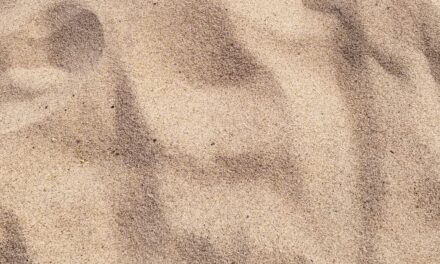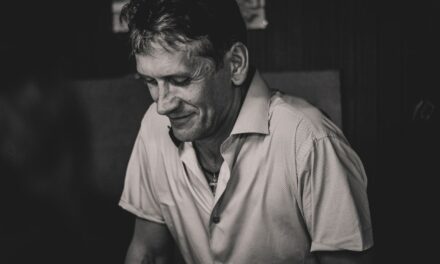The early life of Leonardo da Vinci, one of history’s most celebrated polymaths, is a tapestry woven with the threads of curiosity and creativity. Born on April 15, 1452, in the small town of Vinci, Italy, he was the illegitimate son of a notary, Piero da Vinci, and a peasant woman named Caterina. This unique circumstance afforded him a certain degree of freedom, as he was not bound by the expectations typically placed upon legitimate heirs.
Growing up in the picturesque Tuscan countryside, Leonardo was exposed to the natural world from an early age, fostering a profound appreciation for nature that would later permeate his artistic and scientific endeavours. Leonardo’s formal education was somewhat unconventional. He did not receive a classical education in the traditional sense; instead, he was apprenticed to the renowned Florentine painter Andrea del Verrocchio at the age of fourteen.
This apprenticeship proved to be a pivotal moment in his life, as it provided him with a solid foundation in the techniques of painting, sculpture, and mechanical arts. Under Verrocchio’s tutelage, Leonardo honed his skills and developed a keen interest in anatomy, perspective, and the interplay of light and shadow. His early exposure to diverse artistic disciplines laid the groundwork for his later innovations and mastery in various fields.
Summary
- Early Life and Education: The individual’s upbringing and education greatly influenced their future achievements in both art and science.
- Artistic Career and Achievements: The individual made significant contributions to the art world, leaving a lasting impact on the artistic community.
- Scientific and Inventive Mind: Their innovative and scientific approach to their work set them apart from their contemporaries, leading to groundbreaking discoveries and inventions.
- Works and Legacy: Their body of work continues to inspire and influence artists and scientists to this day, leaving a lasting legacy in both fields.
- Influence on Art and Science: Their multidisciplinary approach to art and science has had a profound impact on the way these fields are perceived and studied.
Artistic Career and Achievements
Leonardo’s artistic career is marked by a series of groundbreaking works that have left an indelible mark on the world of art. His early masterpiece, “The Baptism of Christ,” painted in collaboration with Verrocchio, showcased his burgeoning talent and innovative approach to composition. However, it was his subsequent works that truly established him as a master artist.
The iconic “Mona Lisa,” painted between 1503 and 1506, remains one of the most recognised and celebrated paintings in history. The enigmatic smile of its subject, Lisa Gherardini, has captivated audiences for centuries, while Leonardo’s use of sfumato—a technique that creates soft transitions between colours—demonstrates his unparalleled skill in rendering human emotion. Another monumental achievement in Leonardo’s career is “The Last Supper,” created between 1495 and 1498 for the Convent of Santa Maria delle Grazie in Milan.
This mural not only exemplifies his mastery of perspective but also captures the dramatic moment when Jesus announces that one of his disciples will betray him. The composition is a masterclass in storytelling, with each figure expressing a distinct emotional response to the revelation. Leonardo’s ability to convey complex narratives through visual art set a new standard for future generations of artists.
Scientific and Inventive Mind
Beyond his artistic prowess, Leonardo da Vinci was also a formidable scientist and inventor. His insatiable curiosity about the natural world led him to explore various scientific disciplines, including anatomy, botany, engineering, and hydraulics. His meticulous observations and detailed sketches of human anatomy were revolutionary for their time.
Through dissections of both humans and animals, he gained insights into the structure and function of the body that would inform not only his art but also the field of medicine. Leonardo’s inventive mind was equally remarkable. He conceptualised numerous machines and devices that were far ahead of his time, including designs for flying machines, armoured vehicles, and even an early version of the helicopter.
His notebooks are filled with sketches and annotations that reveal his visionary thinking and understanding of mechanics. Although many of his inventions were never realised during his lifetime, they laid the groundwork for future technological advancements and continue to inspire inventors and engineers today.
Works and Legacy
Leonardo’s body of work extends far beyond his most famous paintings; it encompasses a wide range of drawings, sketches, and scientific treatises that reflect his diverse interests and talents. His notebooks, often referred to as “Codexes,” contain thousands of pages filled with observations on art, science, and philosophy. These writings provide invaluable insights into his thought processes and methodologies, revealing a mind that was constantly seeking knowledge and understanding.
The legacy of Leonardo da Vinci is profound and multifaceted. He is often regarded as the quintessential Renaissance man—a figure who embodies the spirit of inquiry and innovation that characterised this transformative period in history. His influence can be seen not only in the realm of art but also in science, engineering, and even philosophy.
The principles he established regarding observation, experimentation, and the integration of art and science continue to resonate in contemporary thought. As such, Leonardo’s contributions have transcended time, making him an enduring symbol of human creativity and intellectual achievement.
Influence on Art and Science
Leonardo’s influence on both art and science is immeasurable. In the realm of art, he set new standards for realism and emotional depth in painting. His techniques—such as chiaroscuro (the use of strong contrasts between light and dark) and atmospheric perspective—revolutionised how artists approached their work.
The meticulous attention to detail found in his paintings inspired countless artists who followed in his footsteps, from Michelangelo to Caravaggio. In addition to his impact on visual arts, Leonardo’s scientific inquiries laid the groundwork for future generations of scientists. His methodical approach to observation and experimentation foreshadowed the scientific method that would later be formalised during the Enlightenment.
By bridging the gap between art and science, Leonardo demonstrated that creativity is not confined to one discipline; rather, it flourishes at the intersection of multiple fields. This holistic approach has inspired modern thinkers to embrace interdisciplinary collaboration as a means to foster innovation.
Personal Life and Relationships
Leonardo da Vinci’s personal life remains shrouded in mystery, much like some of his most famous works. He never married or had children, which has led to speculation about his sexuality and personal relationships. Some historians suggest that he may have had romantic relationships with young male apprentices; however, concrete evidence is scarce.
His close bond with his pupils—particularly Gian Giacomo Caprotti, known as Salai—has been a subject of intrigue among scholars. Despite his enigmatic personal life, Leonardo maintained friendships with many prominent figures of his time. He was known to have corresponded with influential patrons such as Ludovico Sforza in Milan and King Francis I of France.
These relationships not only provided him with financial support but also allowed him to engage with other intellectuals and artists of the Renaissance. Through these connections, Leonardo was able to share ideas and collaborate on projects that further enriched his artistic and scientific pursuits.
Controversies and Mysteries
Throughout history, Leonardo da Vinci has been surrounded by controversies and mysteries that continue to captivate scholars and enthusiasts alike. One such mystery revolves around the identity of the model for the “Mona Lisa.” While it is widely accepted that Lisa Gherardini served as the inspiration for this iconic portrait, some theories suggest alternative identities or even speculate that Leonardo painted himself into the work. This ambiguity adds an intriguing layer to an already enigmatic piece.
Another controversy lies in the interpretation of “The Last Supper.” The mural has undergone significant deterioration over the centuries due to Leonardo’s experimental techniques and environmental factors. As a result, various restorations have sparked debates among art historians regarding authenticity and fidelity to Leonardo’s original vision. These discussions highlight not only the challenges faced by conservators but also the ongoing quest to understand Leonardo’s intentions as an artist.
Commemoration and Recognition
Leonardo da Vinci’s contributions to art and science have been commemorated in numerous ways throughout history. His works are housed in some of the world’s most prestigious museums, including the Louvre in Paris and The National Gallery in London. Exhibitions dedicated to his life and work continue to draw large audiences eager to engage with his genius.
In addition to exhibitions, Leonardo has been honoured through various awards and recognitions that celebrate his enduring legacy. Institutions dedicated to art and science often reference him as a source of inspiration for innovation and creativity. Furthermore, modern technology has allowed for new interpretations of his work; digital reconstructions and virtual reality experiences enable audiences to explore his masterpieces in unprecedented ways.
In conclusion, Leonardo da Vinci remains an unparalleled figure whose life encapsulates the spirit of inquiry that defines humanity’s quest for knowledge. His early experiences shaped him into a master artist whose works continue to resonate across generations. As both an artist and scientist, he forged connections between disciplines that have inspired countless individuals to pursue their passions with curiosity and creativity.
The mysteries surrounding his life only add to his allure as a historical figure whose legacy will undoubtedly endure for centuries to come.
If you are interested in learning more about the psychology behind art sales, you should check out the article “Discounts vs Value: Understanding Art Sales Psychology”. This article delves into the various factors that influence the buying decisions of art collectors and how artists can use this knowledge to their advantage. It provides valuable insights into the art market and offers practical tips for artists looking to sell their work.
FAQs
Who was Leonardo da Vinci?
Leonardo da Vinci was an Italian polymath, known for his expertise in various fields such as painting, sculpting, architecture, science, mathematics, engineering, anatomy, and more. He is widely considered one of the most diversely talented individuals ever to have lived.
What are some of Leonardo da Vinci’s most famous works?
Some of Leonardo da Vinci’s most famous works include the Mona Lisa, The Last Supper, Vitruvian Man, and the design for a flying machine.
What was Leonardo da Vinci’s contribution to the field of science and engineering?
Leonardo da Vinci made significant contributions to the fields of anatomy, engineering, and scientific observation. He conducted detailed studies of the human body and made numerous sketches and designs for inventions such as flying machines, military weapons, and hydraulic systems.
What was Leonardo da Vinci’s painting style?
Leonardo da Vinci was known for his use of sfumato, a painting technique that creates a soft, blurred effect. He also used chiaroscuro, a technique that uses strong contrasts between light and dark to create a sense of volume in painting.
What is the significance of Leonardo da Vinci’s work?
Leonardo da Vinci’s work is significant for its influence on the Renaissance period and its impact on the fields of art, science, and engineering. His innovative ideas and artistic techniques continue to inspire and influence artists and scholars to this day.



